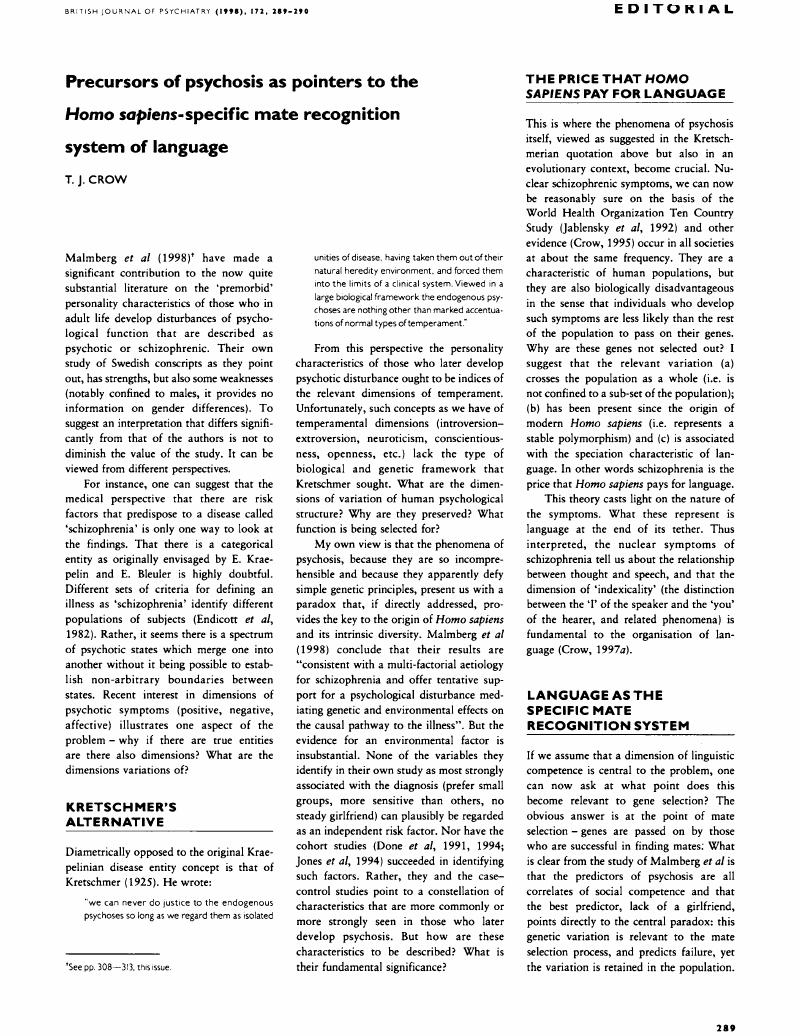Crossref Citations
This article has been cited by the following publications. This list is generated based on data provided by Crossref.
Crow, Tim J.
1998.
Nuclear schizophrenic symptoms as a window on the relationship between thought and speech.
British Journal of Psychiatry,
Vol. 173,
Issue. 4,
p.
303.
Price, J. S.
1998.
Evolution of schizotypy.
British Journal of Psychiatry,
Vol. 173,
Issue. 2,
p.
183.
Jones, Peter B.
and
Tarrant, C.Jane
1999.
Specificity of developmental precursors to schizophrenia and affective disorders.
Schizophrenia Research,
Vol. 39,
Issue. 2,
p.
121.
Boteva, Kalina
and
Lieberman, Jeffrey
2003.
Reconsidering the Classification of Schizophrenia and Manic Depressive Illness — A Critical Analysis and Mew Conceptual Model.
The World Journal of Biological Psychiatry,
Vol. 4,
Issue. 2,
p.
81.
Collip, Dina
Wigman, Johanna T. W.
Lin, Ashleigh
Nelson, Barnaby
Oorschot, Margreet
Vollebergh, Wilma A. M.
Ryan, Jaymee
Baksheev, Gennedy
Wichers, Marieke
van Os, Jim
Myin-Germeys, Inez
and
Yung, Alison R.
2013.
Dynamic Association Between Interpersonal Functioning and Positive Symptom Dimensions of Psychosis Over Time: A Longitudinal Study of Healthy Adolescents.
Schizophrenia Bulletin,
Vol. 39,
Issue. 1,
p.
179.






eLetters
No eLetters have been published for this article.